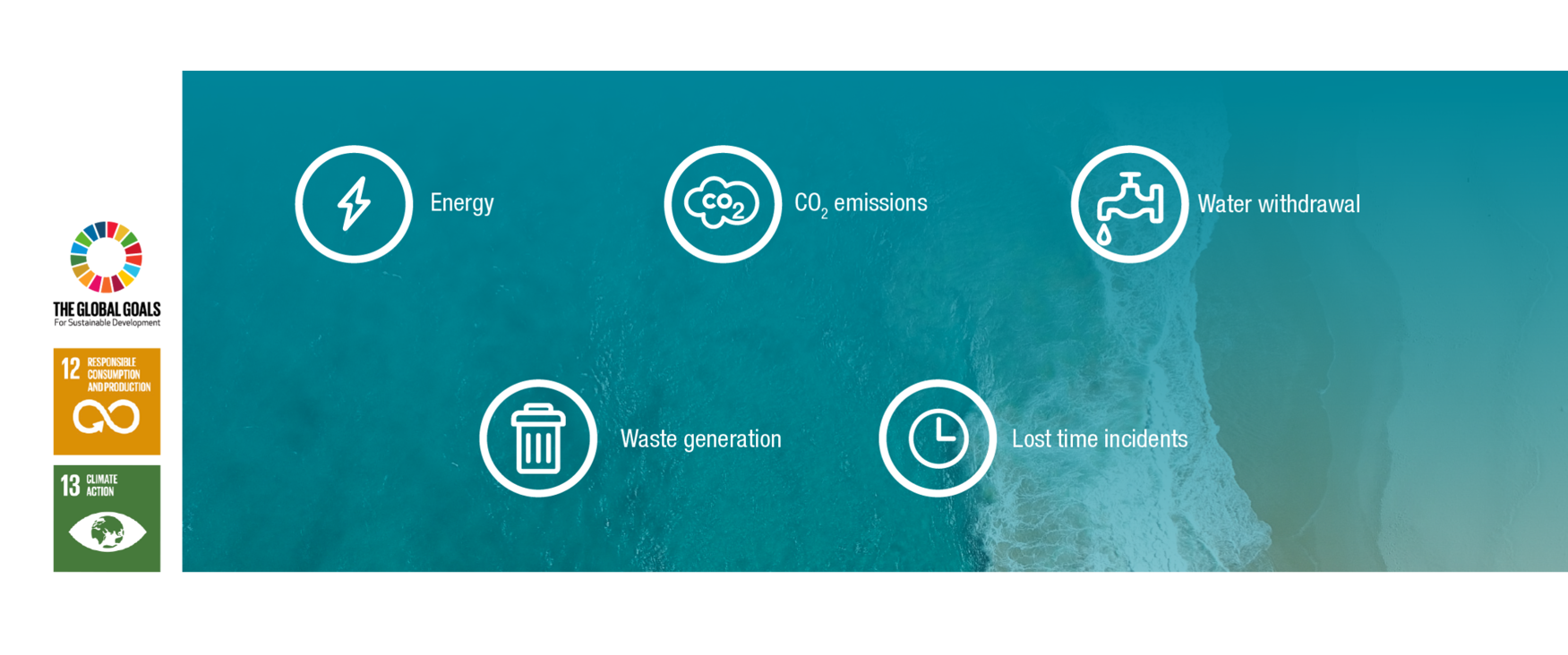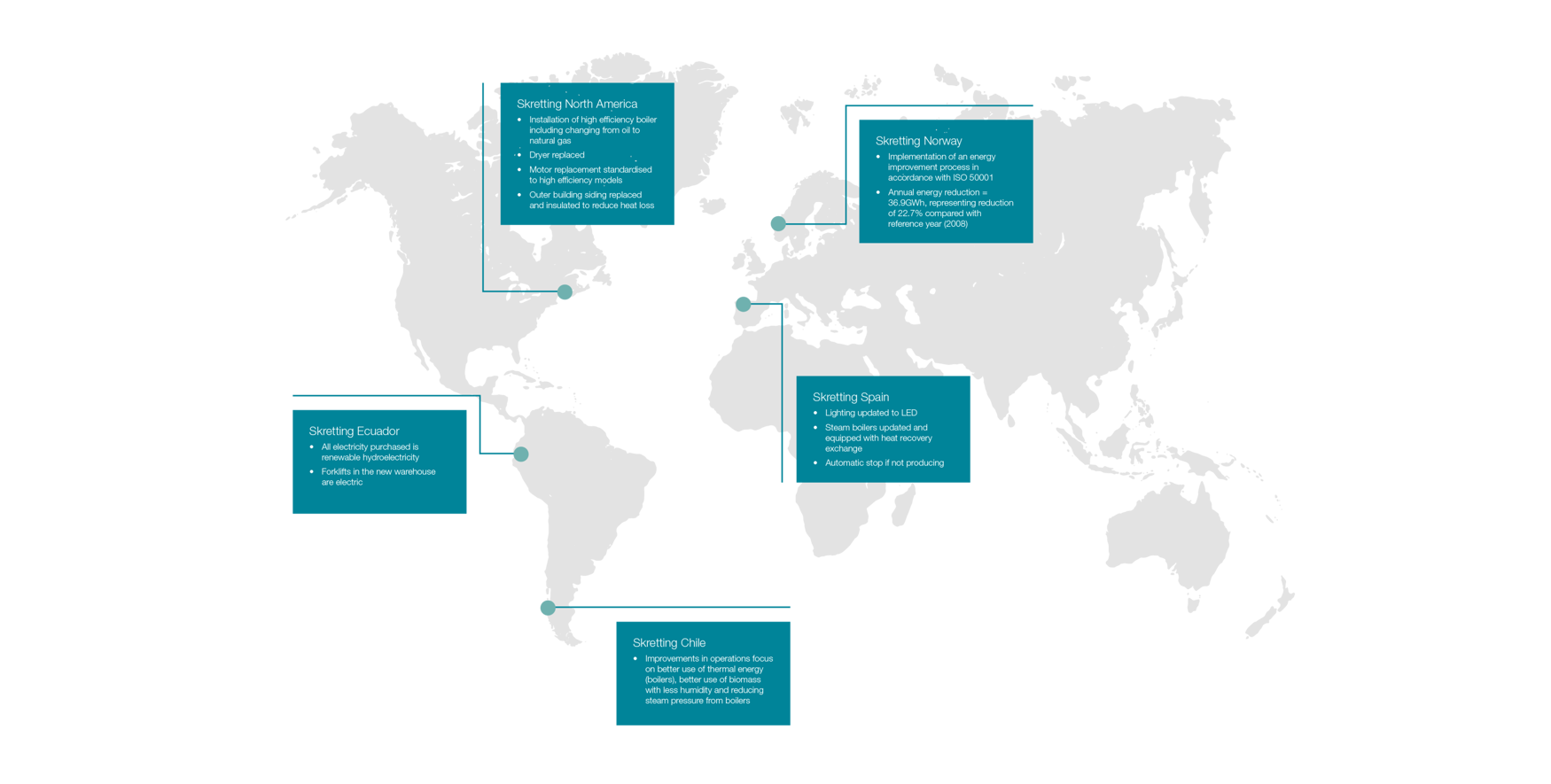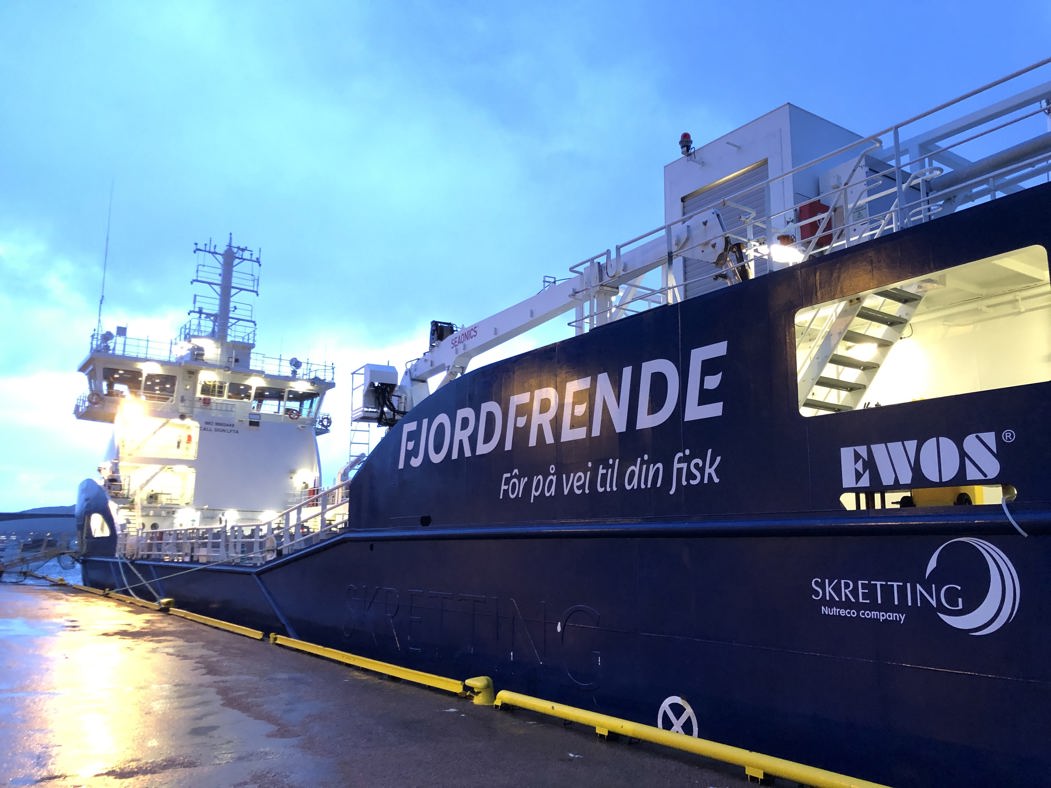
An equally important part of this commitment is to ensure that our own house is in order when it comes to the production of these feeds, and this responsibility drives our focus areas of reducing energy use, carbon dioxide (CO2) emissions, waste and water use across our operations globally.
We are always looking to minimise the negative impacts of our direct operations and create valuable employment opportunities for the communities in which we operate.
We continue to monitor, record and report on five environmental and social manufacturing KPIs on a quarterly basis. We began to do this in 2016, and now all production sites report through our financial reporting systems. We continue to strive for improvement and share best-practice among our different operations.
Skretting currently operates 33 plants around the world in 17 countries. These are collectively producing 2.3 million tonnes of feed annually. Our footprint is always evolving, with new production facilities under construction and closures or plant extensions underway in most regions. We continually monitor and report four key environmental KPIs, the data quality of which is continuously improved by having a third party taking a critical look at our reporting process.
Image: Hilde Roald, Skretting Operations Director



